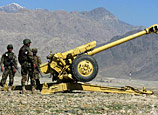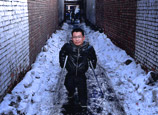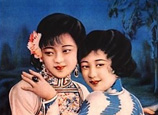
SHANGHAI, March 6 (Xinhua) -- Data from a major trade fair in Shanghai indicates gloomy trade growth prospects for China this year, as the world's major economies are still struggling to recover from the global financial crisis.
The annual East China Fair, which concluded Tuesday, received 20,016 overseas customers, 5.3 percent less than last year. Export deals totalled 2.8 billion U.S. dollars, down 9.9 percent year on year, the fair's organizer said Wednesday.
In terms of exports value, textile and clothing producers saw an even greater decline of 15.7 percent year on year.
"China's trade situation faces very uncertain prospects this year," Gu Jun, deputy director of the Shanghai Municipal Commerce Commission, told Xinhua. "Many overseas clients were very cautious and, therefore, purchased less."
Many exporters at the fair, a barometer of China's trade situation, said orders from the United States and Europe slumped an average of 20 to 30 percent from last year.
Facing the strong headwinds, many cut prices to retain old customers and took measures to tap the Japanese market as well as the markets of a slew of other emerging countries.
He Jiushen, a manager of Shandong Weifang Linrin Import and Export Co., said the company is turning attention to the Japanese and domestic markets in response to weak demand from the U.S. and Europe.
"A sharp decline in orders at the trade fair left me with no confidence in the trade growth this year," He said.
China's foreign trade will continue to struggle in 2013, as overseas demand remains sluggish, the Ministry of Commerce warned on Feb. 20. In 2012, exports rose 7.9 percent year on year.
Though many exporters at the fair pinned hopes on Japan, the number of Japanese customers there slumped 19.7 percent year on year, while the value of deals secured at the fair declined 17.2 percent.
"The declines are unmistakable signs that Sino-Japanese trade is a victim of bilateral relations," said Gao Yongfu, a professor of law at the Shanghai Institute of Foreign Trade.
Meanwhile, the rapid depreciation of the Japanese yen has hurt exporters, as many Japanese clients asked for lower prices to hedge against their weakening currency.
"We rejected many orders, because some Japanese customers sought discounts that were too big," said Xi Yuqiang, assistant manager of Qingdao Canaan Home Fashion Products Co.
Weak external demand has left many Chinese exporters struggling with meager profits.
"Overseas clients seek lower prices and we are operating on meager profits," said Chu Jianping, president of Nanjing Delta Toys and Novelty Co. "Our net profit has fallen sharply over the past few years, even though the sales volume saw no big decline."
Meanwhile, experts have weighed in on how China might successfully weather this economic storm.
"If exporters want to end the era of low profits, they will have to boost R&D spending and indigenous innovation and move up the value chain," said Lu Ming, a professor of economics at Fudan University.
"If China seeks to become a real trade power, it should not only have the ability to compete with emerging countries with lower labor costs, but also with developed economies with technological advances," said Wang Depei, vice president of the China Society of Economic Reform.
















 Missing baby killed in Changchun | Photos: Local residents mourn for killed baby
Missing baby killed in Changchun | Photos: Local residents mourn for killed baby


![]()
